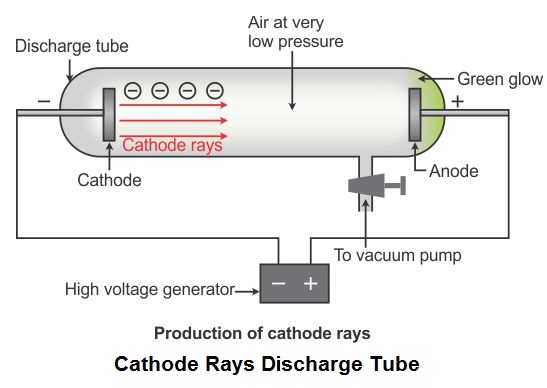

He died on August 30, 1940, and was buried in Westminster Abbey, close to Isaac Newton.Crookes: In 1878, Sir William Crookes, a British scientist, demonstrated the first cathode rays using a modification of the Geissler apparatus. Prior to the outbreak of World War I, Thomson made another groundbreaking discovery: the isotope. Seven Nobel Prizes were awarded to those who worked under him, including his son, Sir George Paget Thomson. His importance in physics is recognized almost as much for those he inspired as for his own experimental work. Thomson was a gifted lecturer and teacher. His investigations into the action of electrostatic and magnetic fields in the nature of so-called "anode rays" or "canal rays" would eventually result in the invention of the mass spectrometer (then called a parabola spectrograph) by Francis Aston, a tool that allows the determination of the mass-to-charge ratio of ions and which has since become an ubiquitous research tool in chemistry. He was awarded the Nobel Prize in Physics in 1906 and was knighted in 1908. Johnstone Stoney had proposed the term electron earlier as a fixed quantum of electric charge in electrochemistry, but Thomson realized that it was also a subatomic particle, the first one to be discovered.Īfter further experiments on how cathode rays penetrate gases, Thomson hypothesized that "we have in the cathode rays matter in a new state this matter being the substance from which all the chemical elements are built up." Thomson might be described as "the man who first split the atom," and to a great extent, he made atom physics a modern science. Influenced by the work of James Clerk Maxwell land the discovery of the X-ray, Thomson deduced that cathode rays (produced by Crookes tube) exhibited a single charge-to-mass ratio e m and must be composed of a single type of negatively charged particle, which he called "corpuscles." G.

JJ THOMSON CATHODE RAY EXPERIMENT RESULTS SERIES
Thomson's discovery of the electron began in 1895 with a series of experiments in the Cavendish Laboratory. One of his students was Ernest Rutherford, who would later succeed him in the post. In 1890, he married Rose Paget, and he had two children with her. In 1884, Thomson became Cavendish Professor of Physics. He was chosen Master of Trinity in 1918 and guided the college until shortly before his death. The highest-scoring student is named the Senior Wrangler, the second-highest is the Second Wrangler, etc.). He was accepted in 1876 and became a Fellow in 1880, when he became Second Wrangler (a student who has completed the third year of mathematics with first-class honors. His professor of mathematics recognized his brilliance, and he was encouraged to apply for a scholarship at Trinity College in Cambridge. So Thomson entered Owens College (now the Victoria University) in Manchester. His father, a bookseller, wanted him to be an engineer, but did not have the fee for J.J.'s apprenticeship. Thomson, was born on December 18, 1856, in Cheetham Hill, a suburb of Manchester, England, to Scottish parentage. Sir Joseph John Thomson, often known as J.J.


 0 kommentar(er)
0 kommentar(er)
